If you’re anything like me, you’ll need an exercise routine that’s not just about more reps, more sets, or more miles. You need a routine which satisfies the body, mind, and inner child all at once.
This is where a great trampoline workout comes into play. Bouncing around on a trampoline feels as far from a workout or a chore as I can possibly imagine. Flying high keeps it easy to reap the awesome benefits that normal exercise gives you, such as:
- Helping to control weight
- Reducing stress
- Warding off depression
- Increasing confidence
- Reducing the risk for diabetes
However, a good trampoline routine has the same benefits, plus a few more unexpected ones as well.
What are some benefits of trampoline exercises?
1. It’s better for your joints:

Source
Trampolining is a better alternative to running for sensitive joints like knees and ankles. Light trampolining is considered low-impact plyometrics, and allows for many of the same benefits without the harsh impacts to critical joints.
2. Trampolining is more intense than running:
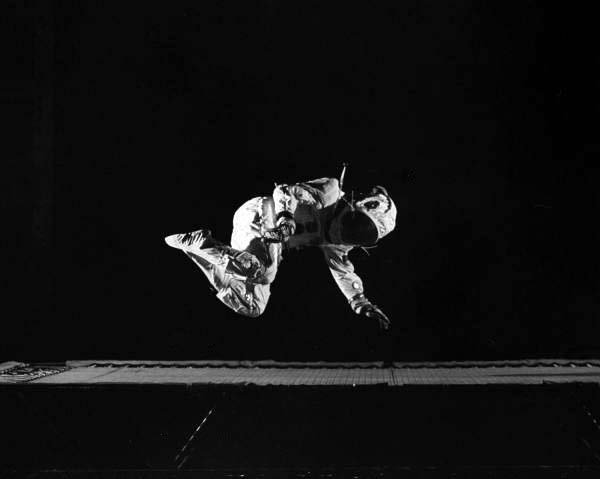
Source
According to a NASA study, rebounding exercises are much more intense from a cardiovascular perspective. NASA has also been using rebounding as a way for astronauts to maintain bone density while in space.
3. Improves lymphatic system:

SourceThe lymphatic system is responsible for ridding the body of toxins and waste. Being on a trampoline kickstarts those functions. Studies have shown that higher g-forces on the body increase lymphocyte activity.
4. Improves balance:

SourceTrampolining makes people use a lot more muscles than they might otherwise use on a daily basis. A study found that, “Trampoline intervention resulted in significant improvements of participants’ performance in all motor and balance tests. In conclusion, trampoline training can be an effective intervention for improving functional outcomes and can be recommended as an alternative mode of physical activity programming for improving balance and motor performance.”
Similar studies on the elderly found it was easier for participants to regain balance during forward falls.
5. It’s Fun

We already know exercise can help ward off depression and anxiety, but did you know having a fun workout routine can actually help you continue your health program?
Think about it. How many times have you started a new workout plan or diet that ended up on the backburner in a matter of weeks? The lackadaisical attitude may have to do with the delayed satisfaction of “feel good” neurotransmitters like dopamine and serotonin. An article from the American Psychological Association explains this phenomenon: “The link between exercise and mood is pretty strong. Usually within five minutes after moderate exercise you get a mood-enhancement effect,” explained Michael Otto, Professor of Psychology at Boston University.
He went on to say, “Starting out too hard in a new exercise program may be one of the reasons people disdain physical activity. When people exercise above their respiratory threshold — that is, above the point when it gets hard to talk — they postpone exercise’s immediate mood boost by about 30 minutes, Otto says. For novices, that delay could turn them off of the treadmill for good. Given that, he recommends that workout neophytes start slowly, with a moderate exercise plan.”
Because you can have a lot of fun without too much exertion on a trampoline, it makes sense why people often continue trampolining routines instead of giving up.
What are some examples or types of trampoline exercises?
1. Standard jumping:

Start out simple to find your comfort level with your trampoline fitness routine. Simply jumping on a trampoline is already a great workout for your core and other parts of your lower body. Begin by imitating a jumping behavior without actually lifting up from the mat. Then continue to increase intensity.
2. Twisting your core:
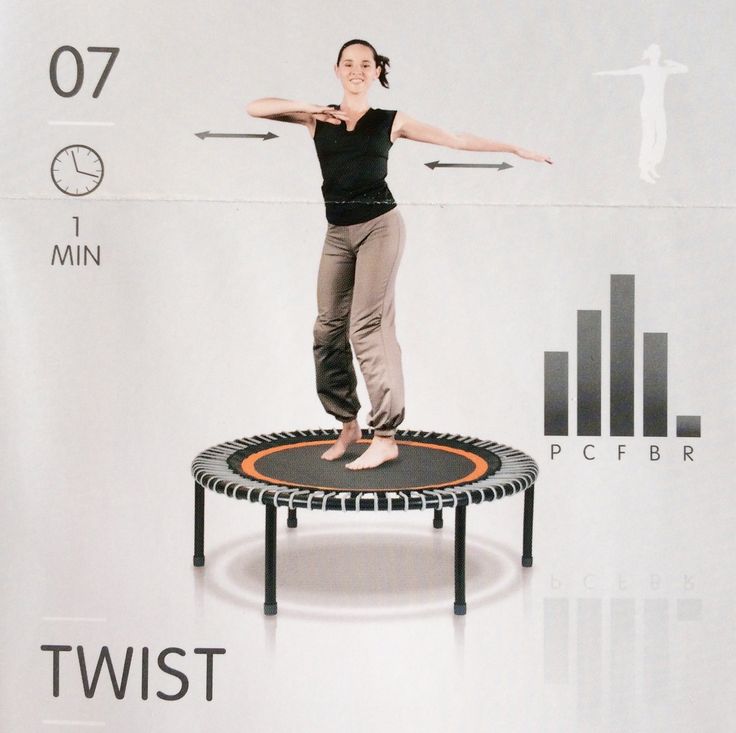
Source
Once you’ve done the simple jump you can switch to rotating your core mid-jump. By twisting your core during side to side while jumping works out your abdominal muscles and lats.
3. Running in place:
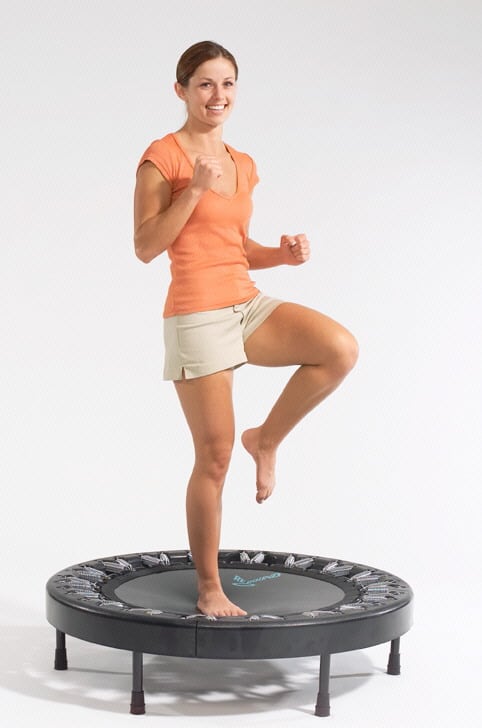
Source
This could be done on a rebounder or full size trampoline. For a bit of variety, you can try adding knee slaps or alternating between jumping and running.
4. Jumping jacks:
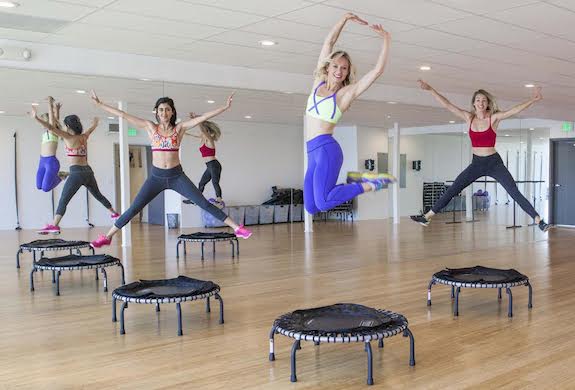
Source
Probably best suited for full size trampolines due to the lack of space on minis. I say this because it takes some time to build up confidence in order to do what’s pictured above.
5. Tricks:
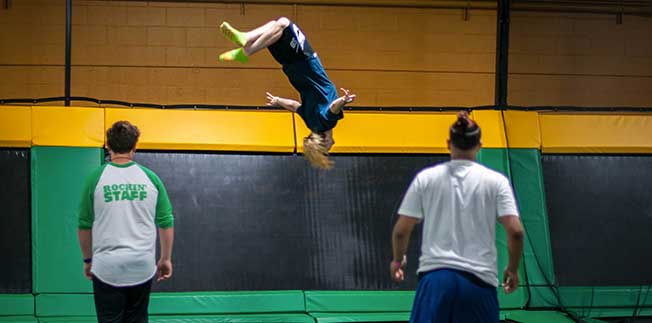
Best suited for full size trampolines. Once you’ve become accustomed to your comfort level on a trampoline, you can begin to test out new tricks to see how far you can take it.
6. Side to Side hopping:
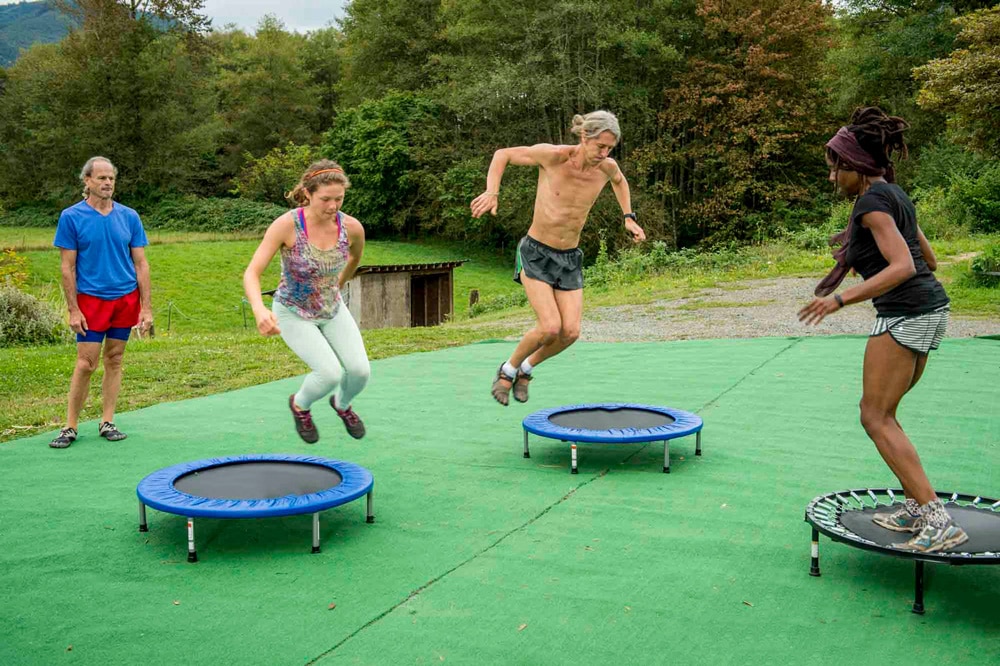
Source
Best suited for rebounders as you can pick up more speed and have a more intense cardio workout. Instead of jumping on the same spot, jump from left to right on the trampoline to give your core a great workout. The picture above shows a variation of the exercise in which you actually jump off the side of the trampoline and then jump back onto it.
7. Weighted arm exercises:
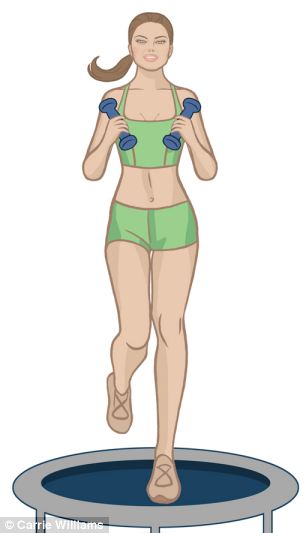
Source
Best for rebounders: Combine jumping or running in place with low weight dumbbells to include more of your upper body into your routine. You can also combine a multitude of dumbbell exercises to increase your upper body workout.
8. Seat Drops:
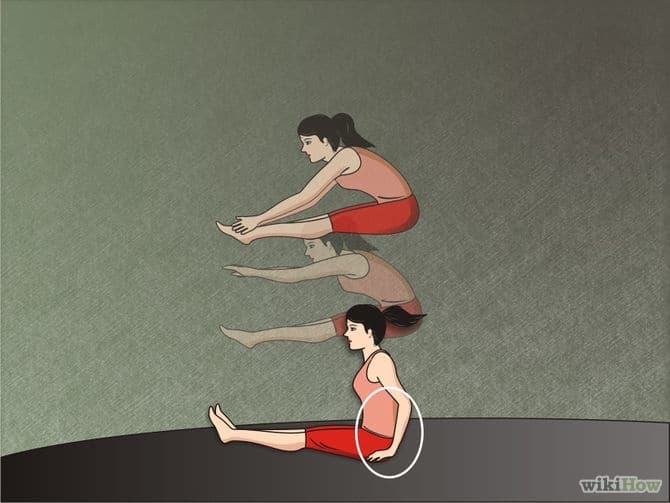
Source
Best meant for a full size trampoline. As you jump into the air, act as though you will sit down on the trampoline. As you hit the mat and bounce back up, straighten out your legs and continue to bounce back and forth between seated and standing positions.
Takeaway:
- Trampolines have a positive impact on your health which you may not get from traditional workout routines.
- Trampoline exercises are fun and may prompt you to keep up your commitment to good health.
- Trampolining is a great way to stay in touch with your inner child.
